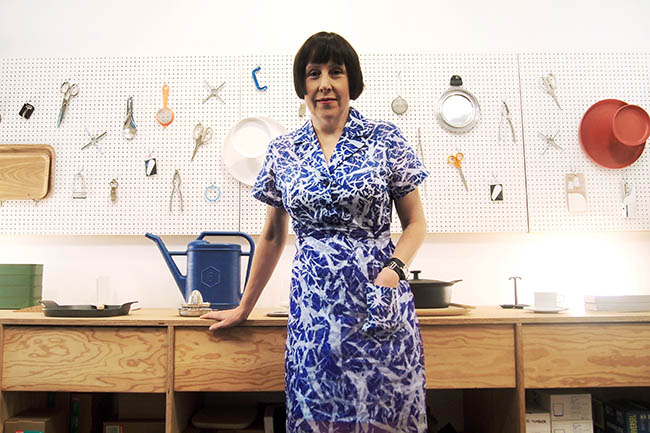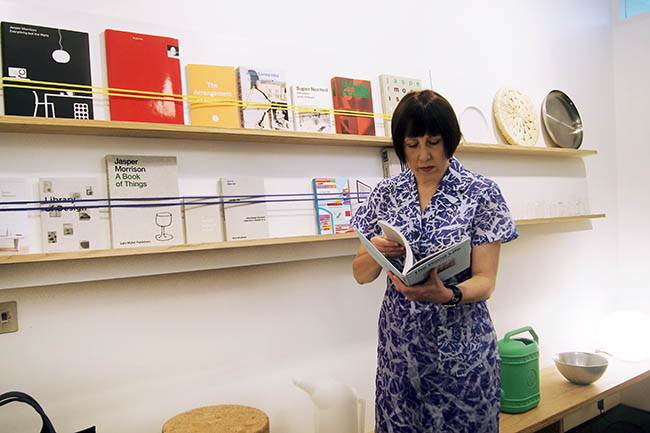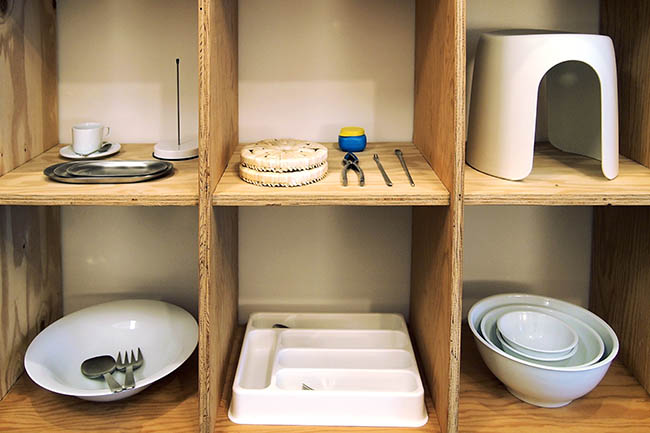 Alice Rawsthorn es una de esas mujeres de bandera que te deja con la boca abierta. Inteligente, elegante y con un punto polémico y radical.
Alice Rawsthorn es una de esas mujeres de bandera que te deja con la boca abierta. Inteligente, elegante y con un punto polémico y radical.
Charlar con ella es como asistir a cien conferencias de golpe, su conocimiento enciclopĂ©dico no tiene lĂmites. A travĂ©s de su columna en el New York Times y su Ăşltimo libro Hello World: Where Design Meets Life, explora los desafĂos del diseño contemporáneo conectándolos con la sociologĂa, la polĂtica, el arte o la tecnologĂa. Hemos recorrido con Alice algunos de sus rincones favoritos de Londres, desde su casa en Columbia Road pasando por la tienda-estudio de Jasper Morrison y la Chisenhale Gallery, de la cual es presidenta. Entrevistamos a una de las voces más potentes del mundo del diseño para hablar de sus orĂgenes en Cambridge, su interĂ©s en la identidad de gĂ©nero, y explorar los lĂmites del diseño a travĂ©s de un completo vademĂ©cum de referencias.
INICIOS: “EstudiĂ© en Cambridge, primero Derecho y luego Arte y Arquitectura. Cuando lleguĂ© a Cambridge querĂa ser abogada y defender los derechos humanos, pero pronto me di cuenta de que no querĂa dedicarme al derecho y busquĂ© algo que fuera más estimulante intelectualmente y más orientado a mis propios intereses personales. ElegĂ cambiarme a Historia del Arte y la Arquitectura donde estudiĂ© principalmente los siglos dieciocho y diecinueve con una visiĂłn excesivamente tradicional que resultĂł bastante decepcionante. Sin embargo, la biblioteca era fantástica, y tenĂa libros fabulosos de arte y arquitectura, y fue allĂ donde completamente por casualidad descubrĂ el diseño, una disciplina de la que en los setenta vagamente se hablaba en Reino Unido”.
PRIMERAS REFERENCIAS: “En aquella biblioteca leĂ el New Statesman, New Society una publicaciĂłn donde escribĂa Reyner Banham, una de las pocas personas que hablaba de manera inteligente sobre diseño en Reino Unido en aquel momento. TambiĂ©n allĂ descubrĂ la revista Domus editada entonces por Alessandro Mendini y Ettore Sottsass como director artĂstico. EscribĂan muy seriamente sobre lo que era el buen diseño y la manera en la que lo hacĂan era contextualizándolo en un sentido amplio, generando una intersecciĂłn de todo lo que me interesaba: arte, arquitectura, polĂtica, psicologĂa, cine, moda, mĂşsica… Esto definiĂł la forma en que ahora veo el diseño, como esa disciplina estimulante y ampliamente contextualizada que afecta a todos los aspectos de la vida”.
Texto: Gonzalo Herrero Delicado
Fotos: Anabel Navarro Llorens
ArtĂculo completo en el nĂşmero de noviembre-diciembre de Neo2. Gratis en tablets Android y Apple… y tambiĂ©n en el visualizador online que convierte tu pantalla de ordenador en una tablet. Solo haz click en FREE ISSUES
Alice Rawsthorn is one of those exceptional women who leaves you slack-jawed. She’s intelligent, elegant and just a touch radically controversial. Chatting to her is like attending a hundred conferences all at the same time: her encyclopaedic knowledge knows no bounds. Through her column in the New York times and her latest book, Hello World: Where Design Meets Life, she explores the challenges of contemporary design, connecting them to sociology, politics, art or technology. We’ve gone to some of her favourite spots in London with the lady herself, from her house on Columbia Road to the shop-studio of Jasper Morrison and the Chisenhale Gallery, of which she is president. We interview one of the most powerful voices in the world of design to talk about her time in Cambridge, her interest in gender identity, and we explore the limits of design through a complete vade mecum of references.
BEGINNINGS: “I studied at Cambridge, first Law and then Art and Architecture. When I got to Cambridge I wanted to be a lawyer and fight for human rights, but I soon realised that I didn’t want to go down that route and I sought out something that was more intellectually stimulating and more oriented to my own personal interests. I chose to do Art History and Architecture where I mainly studied the 18th and 19th centuries, with an excessively traditional vision that I found quite disappointing. Nonetheless, the library was incredible and it had fabulous art and architecture books, and that was where I stumbled across design, a discipline that was only vaguely spoken about in Seventies Britain”.
FIRST REFERENCES: “In that library I read the New Statesman, New Society, a publication that Reyner Banham wrote for, one of the few people who spoke in an intelligent way about design in the UK at the time. That was also where I discovered the magazine Domus, which was edited at the time by Alessandro Mendini and Ettore Sottsass was the artistic director. They wrote really seriously about what was good design and the way in which they did that was contextualised in a broad sense, a crossover of everything I was interested in: art, architecture, politics, psychology, cinema, fashion, music… That defined the way that I see design now, as that stimulating and broadly contextualised discipline that affects all aspects of life”.
Check free the whole article with more pictures and tricks in this link: FREE ISSUES







